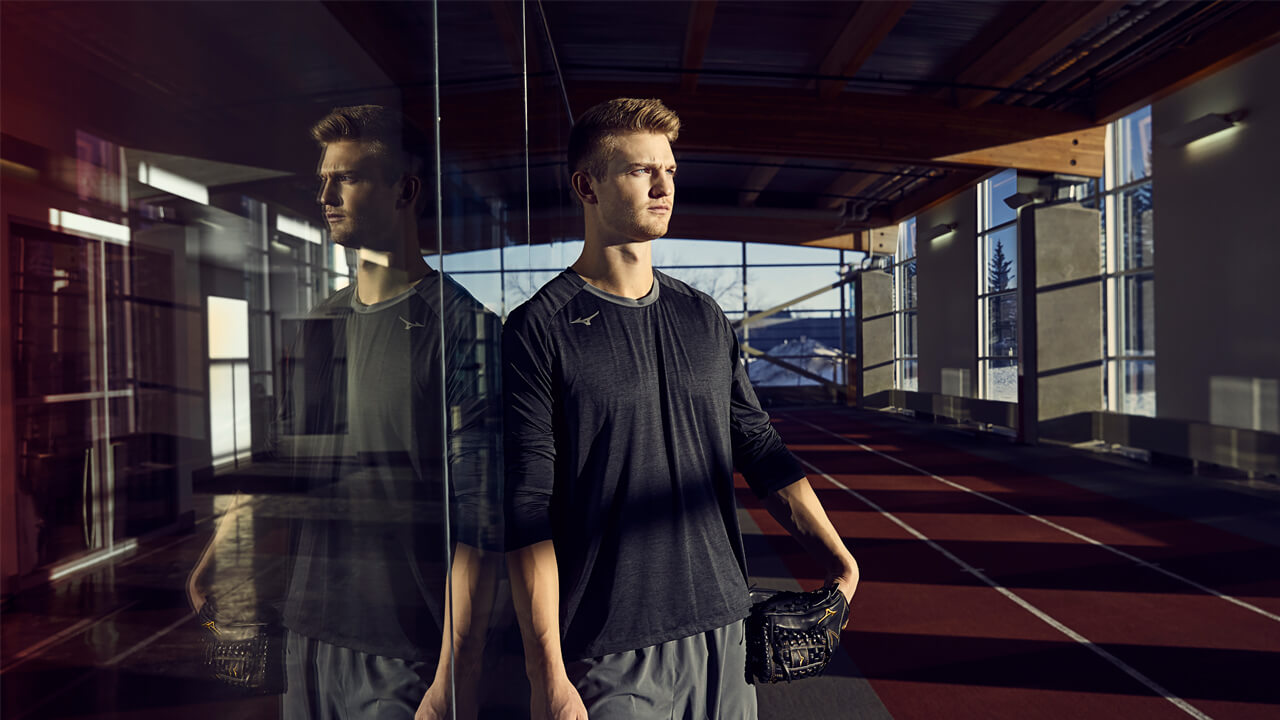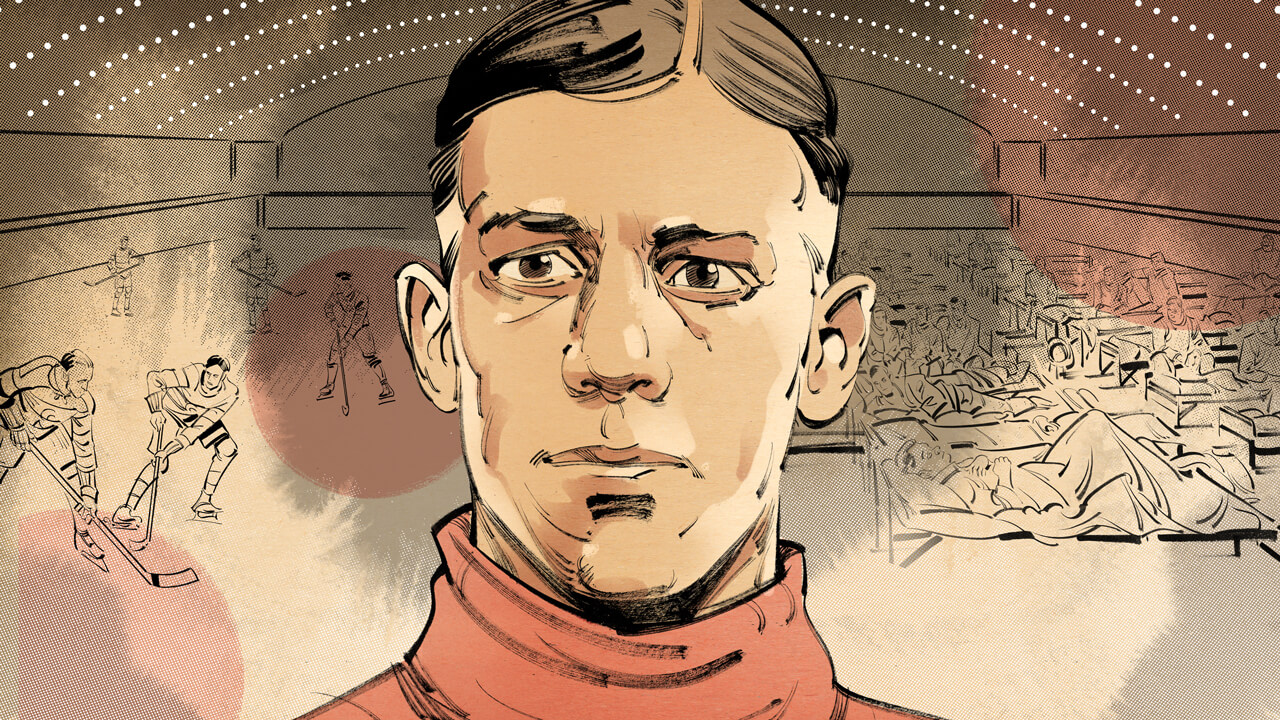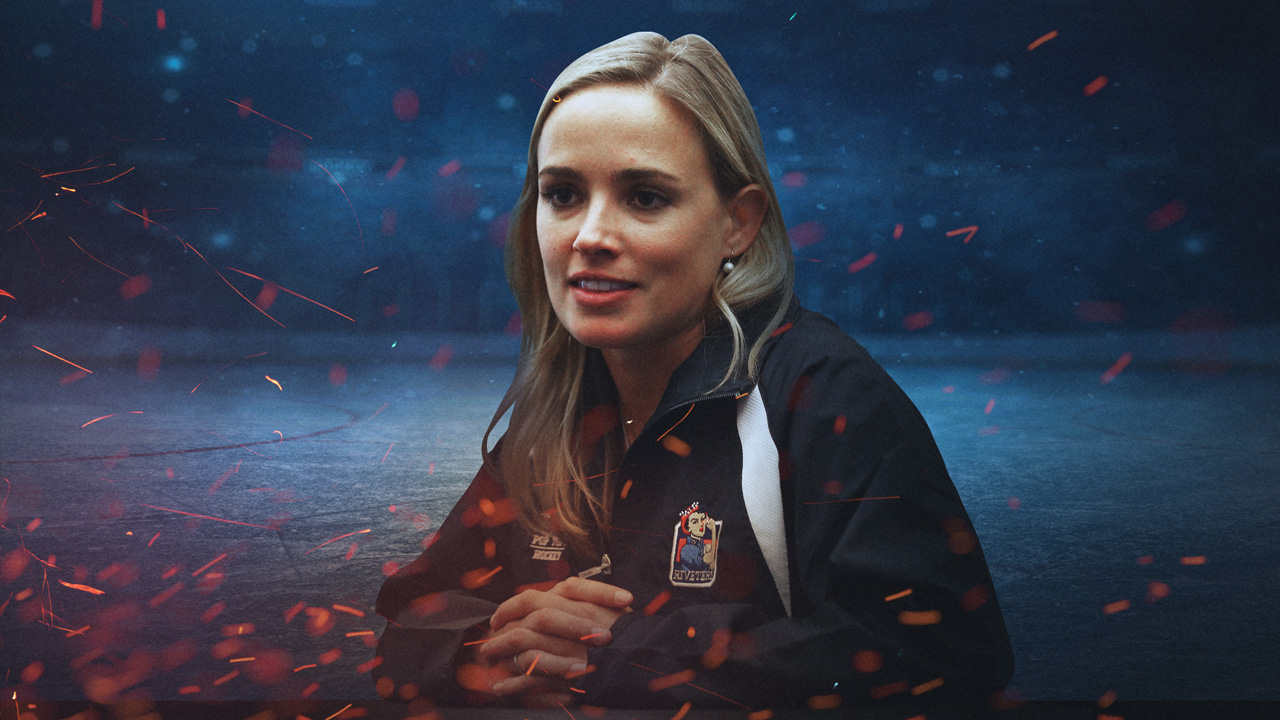Bernhard Langer just ate a bite-sized cake with a strawberry on top, and now he’s explaining how the odds were stacked heavily against him being here. He doesn’t mean specifically where he is this second, which is sitting on a patio overlooking the first tee at Canyon Meadows G&CC in Calgary, dressed sharply in black after a practice round on a windy August day. Langer means here on earth — period.
The two-time Masters champion isn’t being the least bit dramatic. Nor is he suggesting he belongs on some other planet, though that would be quite something. No, it’s his existence he considers unlikely, the first reason being because his father was nearly killed during World War II. Captured as a prisoner of war, Erwin Langer managed to escape a moving train bound for a labour camp, then avoided the ensuing gun shots and hid out until the war ended weeks later. Secondly, Langer’s mother, Walburga, was told that after giving birth to two healthy kids, she and her child would likely die if she became pregnant again. Walburga did get pregnant and she survived. Her child did, too. His name is Bernhard.
“Many things could have happened differently,” Langer admits, with the same even tone he might use to describe a typical round of golf. It’s a story he has lived with forever, after all. But the fact he made it in the first place was the earliest sign of a characteristic that continues to define the greatest German to ever wield a golf club: Rules don’t really apply to Bernhard Langer. The hall of famer is now 62 years old and he’s showing no signs of slowing down. He may even be picking up steam. Langer has recorded at least one win for 14 straight seasons, including during this global pandemic-shortened 2020 campaign that just barely got going. There’s no telling when golf will return, but when it does, one thing is certain: Langer will be chasing history. “Most guys deteriorate and they don’t win anymore,” he says, simply, of aging. “But my point of view is that there are always exceptions. And I want to be one of those exceptions.”
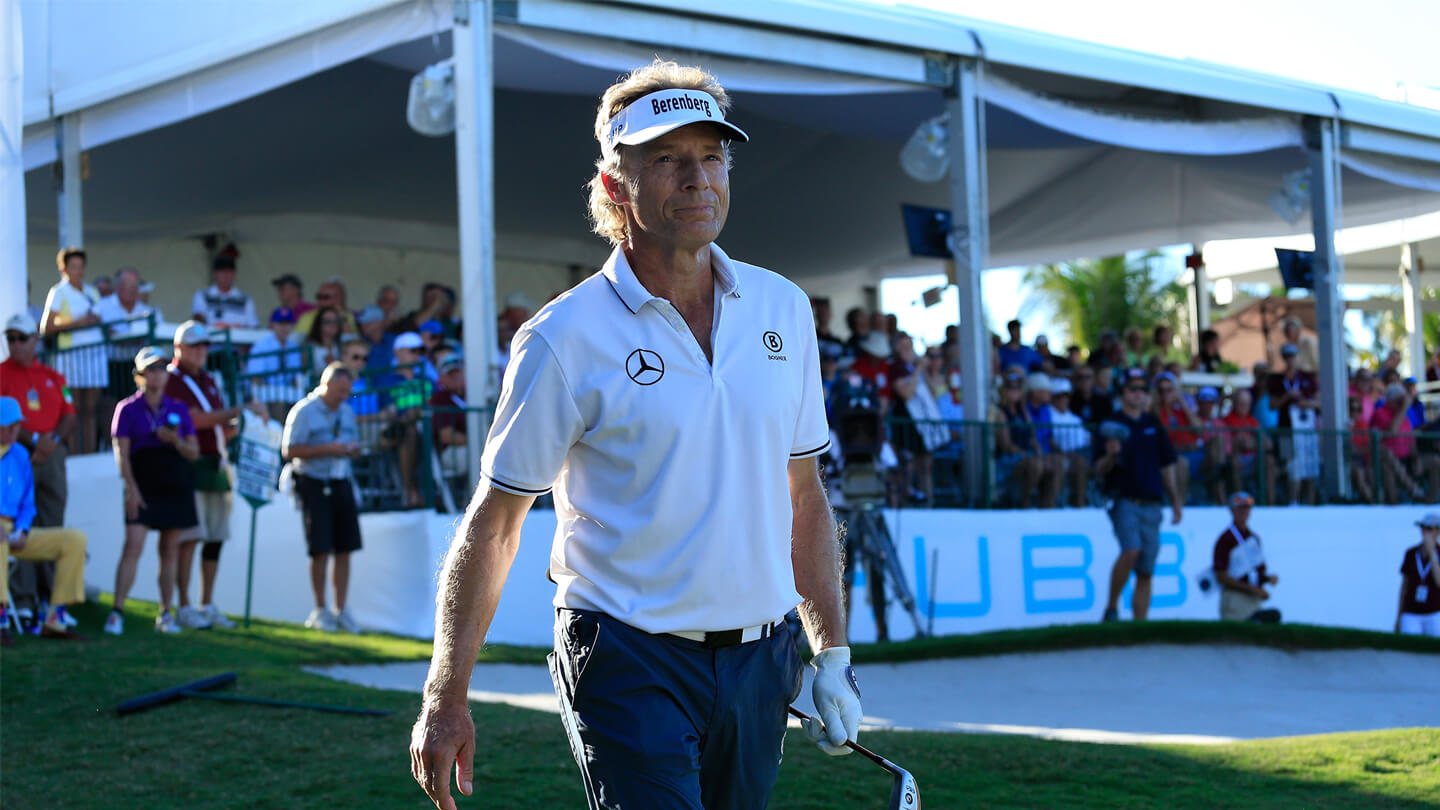
Young Bernhard did not start out exceptionally well in the small village of Anhausen, where Walburga was a waitress and Erwin a bricklayer and the family didn’t have much. Though he made it through his own birth, as a baby and toddler, he would break into a fever accompanied by full-body cramps, pain so bad that he’d roll into a tiny ball and scream. “The doctor said, ‘There’s no cure, there’s nothing we can do for this guy. We don’t have any medication, we don’t know what’s wrong with him,’” Langer says, while sipping water on the patio, his white visor on the table in front of him, sandy blonde hair blowing in the wind. Each time the pain and fever arrived, Erwin and Walburga wondered whether their youngest would make it. The attacks happened a handful of times before they stopped altogether when Langer was three.
Langer was eight when he convinced his older brother to let him tag along to caddie at Augsburg GC, their local 9-hole track, where he was first introduced to the game that would change his life. By far the youngest and smallest caddie to turn up, and one of few who rode his bike there, was he ever lucky on Day 1. “My first job was the club champion, the best player,” Langer recalls. He was next in line when the champ turned up, and that’s how caddies got their assignments. After working with Langer, the club champion requested him every time. “That was cool, because it’s more fun caddying for someone who can play than some hack,” Langer says. Ain’t that the truth.
It didn’t take him long to learn that the club pro needed, say, a 7-iron at 150 yards, and he soon earned the nickname “Eagle Eye,” because he could find any ball hit into the brush, no matter how buried. It was well worth his extra time: “The ball cost more than I was being paid to caddy for nine holes,” he explains.
As many balls as he managed to dig out, Langer couldn’t afford to play in tournaments, and so he was never an amateur golfer and he rarely had a chance to measure his talent against others. When he’d play and practice, course members would gush over his swing. “But what did they know?” Langer asks. “They’re just regular amateurs.”
Plus, he came from a town and country where golf was barely a blip on the radar. At 14, Langer was interviewed to find out what he might want to pursue career-wise — all kids in Germany around his age were. He explained he’d like to become a golf professional, and the man interviewing him asked: “What is that?” After Langer told him and the interviewer tried (and failed) to dig up documents on the profession, he advised the teenaged Langer: “I would highly recommend for you to learn something decent.”
Erwin and Walburga couldn’t dispute that, but their youngest was stubborn, and once he finished school, at 15, Langer convinced them he should move 500 kilometres to become the assistant club pro at Munich Country Club. He rented out a room in a farmer’s house and ate all his meals at the course. “My life was all about golf then,” he says. “There was no other way. If I had started any other job I probably wouldn’t have earned enough money to play, and I enjoyed the game so much.” He figured he could learn to give lessons and run a pro shop and play in his spare time. “That was sort of my dream job,” Langer says.

At 17, Langer won Germany’s national championship for the country’s best amateurs and golf professionals, and a businessman who watched the tournament told Langer he’d help him financially should he want to turn pro. At 18, Langer did, and paid some of his eventual earnings to his backer. “I wasn’t going to be rich or making money, but I had enough to travel for a few weeks a month without having to borrow from the bank,” he says. It meant he finally had a chance to measure his talent against other Europeans.
Langer played his first season on the European Tour when he was 19, and in his third tournament, the 1976 Madrid Open, he finished T-5. “If I just improve this little bit and that little bit,” he thought, “I could be one of the best out there.”
Before he truly realized that goal, Langer first had to serve 15 months of compulsory training with the German military, between ’77 and ’78. He suffered a major back injury early on, during “a stupid, stupid exercise,” he says, a drill that saw trainees toss themselves to the frozen ground while strapped with a 30-pound backpack. Thanks to that stupid exercise, he spent six weeks in hospital with a stress fracture and two bulging discs. Soon after his back healed and he’d returned to the group to finish up basic training, he was spared and moved to a specialty area. “I was already the best golfer in Germany, so I was lucky enough to be put in a sports company,” he says. “That’s where the best sportsmen were gathered together and they could train pretty much all day.” Langer was the only golfer, joining a group of mostly distance runners.
When he returned to the European Tour in 1979, Langer hit the ground running, earning his first international win at the Cacharel World Under-25 Championship, an unofficial Tour stop in France, by 17 strokes, a feat fit for the Guinness Book of World Records. “It’s hard to win by 17 strokes over four days,” he says. (Langer now holds three different Guinness World Records). His first official win on Tour came the following year, and in 1981, he led the European money list. “I was hoping to be one of the best in Europe, and then see how good the Americans are. At the time, the Americans were the best golfers in the world,” Langer says.
Richard Deitsch and Donnovan Bennett host a podcast about COVID-19 and its impact on sports. They put big news into perspective and offer a window into the lives of people we normally root for in entirely different ways.
By the end of the 1983 season, Langer had eight wins on the European Tour but he’d still played only a smattering of PGA Tour stops and had yet to win a major. He’d come oh-so-close in 1981, finishing runner-up at the Open Championship. He was second again in ’84, this time behind Seve Ballesteros, a Spaniard his age who had captured three majors. “I’d beaten Seve many times in other tournaments, but he wins majors and I don’t,” Langer thought. “I should be winning majors, too.”
A season later, in his third Masters appearance, Langer did just that, earning his first green jacket and becoming Germany’s first-ever major champion. He was 27 years old and wearing red on Sunday, and he birdied four of the final seven holes at Augusta. This time, it was Ballesteros, along with Raymond Floyd and Curtis Strange, who settled for second. “It elevates you to another level,” Langer says. “It’s something we all practice for. You’re on the putting green many hours and you think, ‘Okay, this is for the Masters. This is for the British Open.’ You imitate those moments. When it finally happened, it was a great feeling.”
Langer had by then topped the European Tour’s money list twice and recorded 13 victories. But it wasn’t until a year later, when the Official World Golf Ranking was established in 1986, that the landscape of pro golf truly changed for Langer and many of his fellow Europeans. “We thought that was a good idea to have a world ranking, that winning the Spanish Open or the German open or the Dutch Open, that would mean something too, not just winning in America. We thought it was about time, because they treated us Europeans pretty poorly, to tell you the truth,” he explains. “We had very little access to play in America before that, not even in the majors — they’d only invite one or two Europeans to those tournaments back then.” After the ranking was established, the PGA Tour’s biggest tournaments began to invite the top 30 or 50 in the world. “That included a handful or more of us all of a sudden,” Langer says. “So, it opened up.”
When that first-ever world ranking came out in April of 1986, Tom Watson was the top-ranked American, at No. 4. The first world No. 1 in golf history was a 28-year-old German, who was quite pleased and proud when he read the news in the next day’s paper.

Retief Goosen has witnessed a few chapters of Langer’s dominance. The two-time U.S. Open champion started playing a full slate of tournaments on the European Tour back in 1993, and Langer won three times that season (his 42 total wins are second-most all time on Tour to Ballesteros).
Goosen is now 51 years old and a newer face on the Champions Tour, and he can’t explain how Langer has kept up with the winning. He gives it a shot, though: “I don’t know what it is about the Germans,” the South African says, with a shrug. “Obviously German engineering seems to be pretty good.”
That Langer is “ageless” is a common observation on the Champions Tour. “Since I’ve known him in the early ’90s, nothing has changed,” Goosen says. “He’s got a few more wrinkles, but otherwise the body hasn’t changed.”
Another widely held view out here is that once a player turns 55, he stops winning — around the time the next crop of youngsters (it’s all relative) arrive on the Champions Tour. Ernie Els joined this season and has already picked up a win, and Phil Mickelson hits the half-century mark this summer. Scott McCarron is an 11-time winner on the senior circuit, and at 54, the American knows he has to stay in top shape as the new wave of players comes up, “because if you don’t, these guys are going to run right over you,” he says. In the next breath, McCarron points out that Langer is 62 “and he’s not slowing down anytime soon.”
The pair have a friendly rivalry, and last season McCarron topped the Tour’s money list for the first time after finishing No. 2 to Langer in back-to-back years. For McCarron, Langer is part of his continued education in this game. “He’s someone that I watch what he’s doing, how he picks apart a golf course, how he prepares for a golf tournament, how he practices, how he’s working out, how he’s eating right,” McCarron says. “He really is kind of the ageless wonder.”
Through five tournaments in 2020, the Ageless Wonder leads the Tour’s money list, which he has won a remarkable 10 times in the past 12 seasons. Langer’s latest win came in early March at the Cologuard Classic in Tucson, Ariz., when he battled back from a four-stroke deficit on Sunday to win by two. It was Langer’s 41st Champions Tour victory, and he’s now five wins shy of breaking Hale Irwin’s all-time record. “I think he’s got the desire,” McCarron says. “I think that’s what’s driving him now.”
Caddie Terry Holt has been working with Langer since 2007. He says of all the players he’s ever seen, four stand out as having the insatiable will to win: Irwin, Ballesteros, Tiger Woods and Langer. It’s part of the reason Holt wanted to work for Langer when the German was in his late 40s and many had already written him off as no longer having a chance to contend on the younger man’s tours. A few months after the pair became a team, Langer lost in a playoff to Rory Sabbatini at the PGA Tour’s Crowne Plaza Invitational. He was 49 years old.
Nearly a decade later, at 58, Langer made a run at the 2016 Masters — a win there would’ve made him the oldest man to capture a golf major. And though he faltered on Sunday to finish 11 strokes back, through three rounds, the oldest chap in the field was two strokes back of 22-year-old leader, Jordan Spieth. Everybody wondered how Langer had managed to turn back the clock.
“He’s convinced himself and his body that it can continue to improve with age — really, honestly,” Holt says. “And he has proven it.”

It’s back in the good old days when golf had a season, and Langer starts this Friday round in Calgary with an eight-foot putt for birdie. On No. 2, he drops a 20-footer to move to two-under, pumping his fist with a straight face while some 100 fans following him roar. Langer is rolling early.
Though he won’t finish the weekend on top — he’ll settle for T-12, seven strokes back of the eventual winner — Langer is a fan favourite here. Fans shake their heads as he rolls in putts and they use words like “magic” to describe his play. Just before Langer’s practice round a day earlier, a local farmer told him he’d been an alcoholic and had turned his life around after watching him play on TV. “Thank you for telling me, and congratulations,” Langer said, with a smile, while autographing a scorecard the man brought. (Langer’s signature is baffling: It looks like a bunch of inter-connected bubbles, save for a discernible “B” and “L” and a “ger” to finish things off.)
As he’s gotten older, Langer has hoped to show his personality to fans a little more, though it’s been difficult. Most of what they know of him is his dedication and training regimen. “He finds it hard to let himself go on the golf course,” as Holt puts it, such is his all-encompassing focus. Woods’s former caddie Steve Williams, who worked on Langer’s bag for a few weeks years ago, says he has never met a golfer so precise.
“I’d see a sprinkler head in the fairway and tell him it’s 168 yards to the front, and he’d say, ‘Well, I’ve got 167.’ I mean, is there a difference?” Williams says, laughing. “Everything had to be exact. But that’s what has made him good. Unbelievable player. I think he probably takes it as serious as any player has post-50. And good on him.”
Because he’s so dialled in on the course, Langer’s personality comes as a surprise even to fellow competitors, like McCarron, who started getting text messages from Langer years ago. “It really shocked me the first time he did it, because he sent some emojis,” McCarron says, grinning. “I didn’t think Langer had emojis in him.”
And what a relief it is to discover that though Langer has a strict regimen in the gym, he also has a serious sweet tooth. That he had only one little cake after his practice round was a test of sheer will. “I held back,” he says. “Usually I have four or five.” Langer likes “all the sweets,” and Holt can confirm. “He could cut down on some sugar,” the caddie says. “He really could.”
The sweets have been a lifelong love of Langer’s, but other parts of his day-to-day have changed over the years. His practice routine, for example, is much different than it was at age 30. “I can’t pound 500, 800 balls a day anymore,” he says. “It’s a lot less now in that regard, but I try to stay focused when I practice, so that it means something — I really focus.” He’ll arrive a couple hours before a morning tee time, warm up (today, on a stationary bike), stretch and lift weights before hitting the driving range and chipping-putting area for about an hour. “I get done playing, have lunch, hopefully some desert,” he says. Then it’s back to the range for an hour, physio after that, stretching and dinner. “I spend more time stretching and working out and recuperating than I did years ago, giving my body a break to recover,” he says.
That maintenance work is one of the pieces to the puzzle Langer credits for his success over the years. Others include health, a good private life (he has four kids), pacing oneself, having other passions (his is skiing), having maintained the same coach for 40 years (Willy Hoffman, who he met at 16), and a strong support staff (that includes a brother as his manager.) “And, I love the game,” Langer says. “I love to compete.”
But he’s also learned to take breaks from the game. “He might go home and not touch a golf club for three days,” Holt says. “That rest and enjoying time with his family is a critical factor in his performance.”
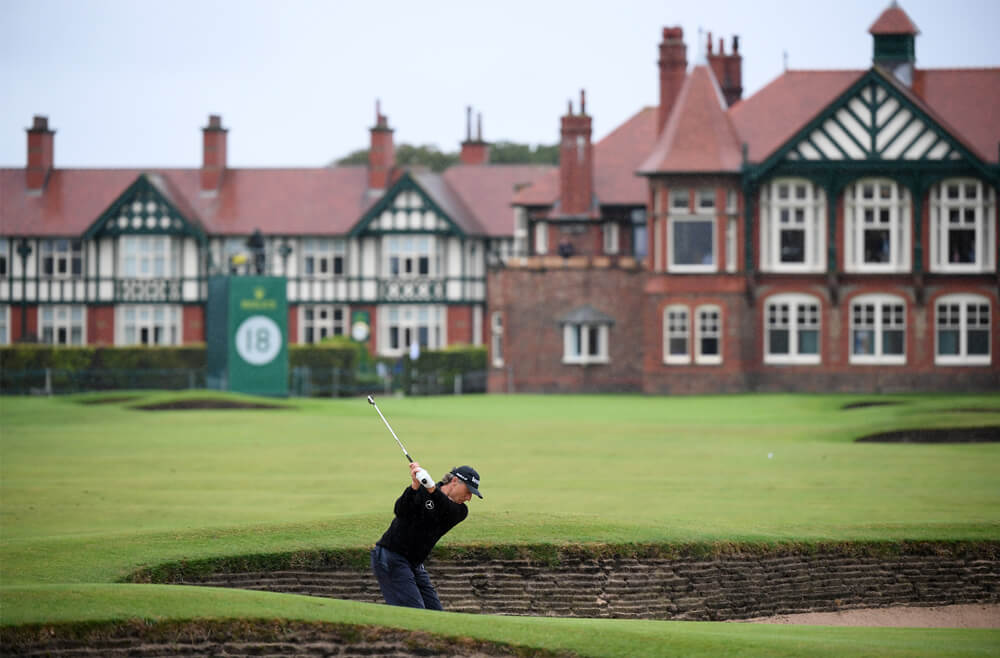
A quick recap on what we’ve learned so far when it comes to the secret to being ageless: Eat sweets, get lots of rest so you can recover and spend time with your family. Piece of cake — or four or five.
This is not to say parts of Langer’s game haven’t regressed over the years. They have. For one, Holt says, his swing is slower. And while the Masters is Langer’s favourite tournament, he says Augusta is getting too long for him, since he averages just shy of 280 yards off the tee compared to the longest bombers on the PGA Tour, who regularly hit it upwards of 320 yards.
But Holt maintains that Langer is a better driver of the ball than he was as a much younger man. “Since 2010, he’s become so much better, he’s been one or two or three-ranked in total driving [on the Champions Tour] for many of those 10 years,” Holt says. “Once you’ve put it in the fairway, you get an iron player like he is, then you start to give yourself a lot of birdie chances. That’s what his success is founded upon. He’s driving the ball more consistently, hitting more fairways than he did in his regular Tour days.”
Langer is No. 1 on the Champions Tour in average putting, though that’s the part of his game that has caused him the most frustration. He has battled the yips four times, and it was so bad in 1989 that he considered putting his clubs away for good. “I literally was praying and saying, ‘God, if you want me to do something else, I’m ready to give it up. I’m ready to quit because I can’t do this any longer, not like this. Just let me know what you want me to do,’” he says. Langer continued to play through that nervousness on the green, but he wants more than a few putts back — most notably the six-footer for par that would’ve won his match and sealed the 1991 Ryder Cup for Europe, which the U.S. then won.
That he’s still out there draining putts — he hasn’t had trouble with the yips for years, and not since he turned to a long putter — is more evidence of one of the qualities that sets him apart, if you ask Goosen. “All the putting issues and whatever issues he’s had in the past, to come back and still play the way he plays definitely shows how mentally strong and how much he believes in what he has,” Goosen says. “That’s probably the strongest part of his game.”
Langer felt rejuvenated at 50 when he joined the Champions Tour. He was thrilled to be a rookie again, to play different courses and have tournaments with no cuts, which makes travel planning much easier. “And to be one of the better guys again and be on the leaderboard every week, pretty much,” he says. “That was the draw at first. Competing with guys I’ve known for 30 years — I’m good friends with many of them. It’s a lot of fun.”
And though the plan out here was always to be one of the best, Langer has surpassed even his own expectations. The year he turned 60, in 2017, he won seven tournaments, including two majors. In 13 full seasons on the Champions Tour, he has won 11 major championships, more than anyone ever. Back in 2018 he failed to win a major and some critics questioned whether he would again. Then he won the 2019 Senior Open Championship for a record fourth time. As of the end of 2019, eight players had managed three straight years with a tournament win on the Champions Tour, while Langer’s streak was at 13. He extended it to 14 during this abbreviated season.
Every time he wins, Langer not only feels a great sense of satisfaction, but he also thinks of the fans. “I hope it gives other people hope, you know?” he says. “I’m trying to be a role model for the younger generation, and at the same time, give the older people some hope that they can still improve at age 50 or 60. It can be done.”
Langer is living proof. But, sadly, those “ageless” rumours aren’t true. “Don’t believe anybody,” he says, laughing, shaking his head. “I wish I was.”
But what about all those times he plays like a man 20 or 30 years younger? “Well, yeah,” Langer says, smiling, “sometimes that’s still going for me. I’m not complaining.”




